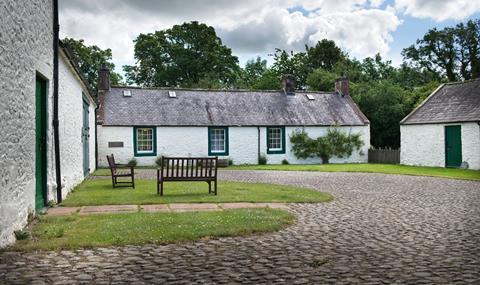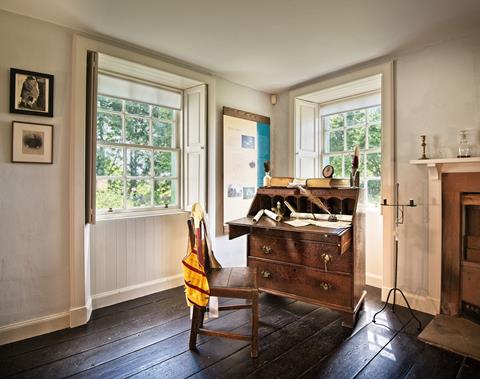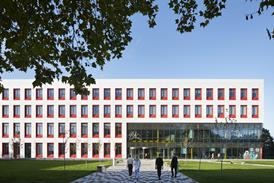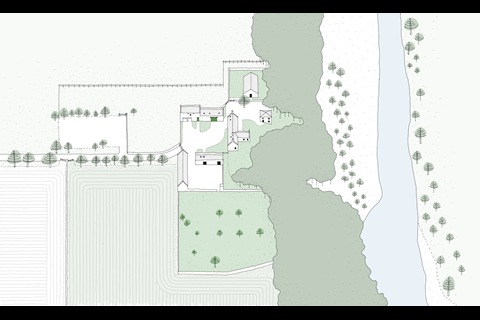Practice will lead on proposals for safeguarding the A listed 18th-century farm buildings near Dumfries, once home to Scotland’s national poet

Collective Architecture has been appointed to lead the conservation and design work at Ellisland Farm, the home built by Scottish poet Robert Burns, as part of a wider plan to preserve the historic site and adapt it for contemporary cultural use.
The project forms part of the Saving the Home of Auld Lang Syne initiative, which is supported by the National Lottery Heritage Fund, South of Scotland Enterprise, Museums Galleries Scotland and The Holywood Trust. The site is managed by The Robert Burns Ellisland Trust, the charity responsible for its long-term care.
Ellisland Farm, located near Dumfries, was constructed in 1788 and is where Burns wrote some of his best-known works, including Auld Lang Syne and Tam o’ Shanter. The A listed farmstead has been described by the Trust as a site of “exceptional historic and cultural importance”, though condition reports have identified parts of the building as at risk.
Led by architects Emma Fairhurst and Gerry Hogan, Collective Architecture is tasked with developing proposals that aim to reverse historical damage, improve conditions for the museum collection and create adaptable space for events and education. The design team also intends to introduce visitor accommodation on the site, which Burns once called “Sweet Poetic Ground”, as part of a strategy to support creative retreats and workshops.
The project has revised earlier proposals for a new-build visitor centre, instead focusing on the repair and adaptive reuse of existing buildings. The brief includes the restoration of the cottage Burns built for his wife, Jean Armour, which is intended to be returned as closely as possible to its original 1788 condition. According to the Trust, modern alterations will be removed to create “an immersive historical experience”.

Joan McAlpine, project director of Saving the Home of Auld Lang Syne, said the team was selected through a competitive tender process and cited Collective Architecture’s previous work on other A listed sites. “We particularly admired their work on other A listed sites such as the restoration of the Calton Hill Observatory in Edinburgh and the James Watt Institute in Greenock,” she said. “Both projects involved the sensitive adaptation of heritage buildings housing important collections.”
Emma Fairhurst of Collective Architecture said: “It is a privilege to be appointed to lead the design team for Ellisland Farm, a site of deep historical and cultural value. We look forward to working closely with The Robert Burns Ellisland Trust to restore and enhance this remarkable place, ensuring its legacy is preserved and celebrated for generations to come.”
The practice, which is 100% employee-owned, has studios in Glasgow, Edinburgh and Dundee, and has experience in conservation and energy-conscious design. Its previous projects include the Glasgow Women’s Library and The Briggait.
Several other consultants have also been appointed to the project. Abound, a consultancy based in Peebles, will prepare an interpretation plan for the site, while Rob Robinson Heritage is developing a revised business plan. Peter Thierfeldt, who has worked on the Willow Tea Rooms, The Citizens Theatre and Pitlochry Festival Theatre, has been named as Director of Development and will lead a major international fundraising campaign.
The current development phase of the project is valued at more than £900,000. Subject to approval, this could unlock a further £1.2 million from the Heritage Fund to support the full delivery of the scheme.


















No comments yet